EPOJET
Two-component, super-�uid epoxy resin for injections and anchorings
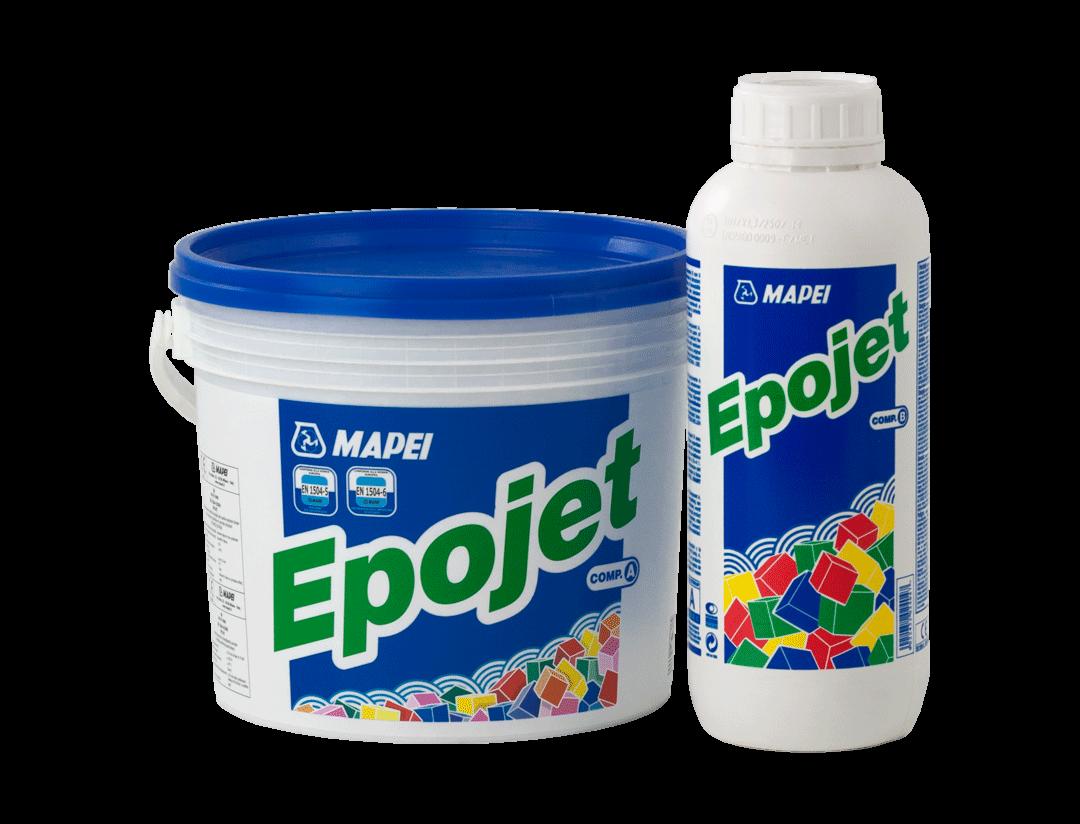
WHERE TO USE
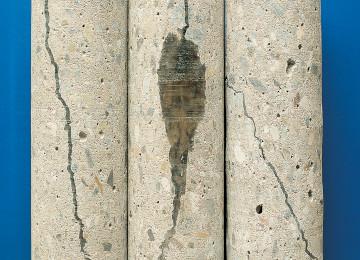
Monolithic repair of structures with cracks or �ssures caused by heavy loads, accidental impacts and earthquakes
Bonding and reinforcement of structures by low pressure injection
Precise anchoring of metallic structures
Some application examples
Structural repairs of beams, pillars and �ssured �oors by low pressure injection.
· Reinforcement of beams and �oors by using injection and béton plaqué, the plated concrete technique, when the plates to be bonded are �tted with lateral �aps and it is therefore impossible to apply Adesilex PG1 or Adesilex PG2 directly
Restoring and waterproo�ng cracks in reservoirs, tanks and canals.
Restoring, by injection, various elements of façades, cladding and architectural elements that are loose
Protective injections of post-compression cable ducts
Structural consolidation and restoration of civil and industrial road constructions which show signs of cracking.
Sealing of �ssures in cementitious screeds
Consolidation and restoration, by injection, of concrete structures damaged by earthquakes, settlement or impact
Anchoring metallic structural work and steel reinforcement.
TECHNICAL CHARACTERISTICS
Epojet is a two-component solvent-free epoxy adhesive The pre-measured components (component A = resin and component B = hardener) must be mixed together before being used
Once mixed, Epojet becomes a liquid with low viscosity very suitable for injection
Epojet polymerizes without shrinkage and once hardened is waterproof
Epojet has very good insulating properties and high mechanical strength; furthermore it adheres perfectly to concrete and steel
Epojet meets the requirements de�ned by EN 1504-9 (“Products and systems for the protection and repair of concrete structures - De�nitions, requirements, quality control and evaluation of conformity - General principles for the use of products”), the minimum requirements claimed by EN 1504-5 (“Concrete injection”) and the minimum requirements for EN 1504-6 (“Anchoring steel reinforcement”)
RECOMMENDATIONS
· Do not use Epojet at temperatures below +5°C
Do not apply Epojet to wet surfaces
Do not apply Epojet on dusty, friable or weak substrates.
· Do not use Epojet for sealing expansion joints
APPLICATION PROCEDURE
Prepation the substrate
Before injecting Epojet, the concrete substrate must be perfectly sound and clean Remove all crumbly and loose parts, dust, cement laitance and paint by sanding or brushing Concrete soaked with oil or grease must be completely demolished
Placing the steel reinforcement and injection
Remove all traces of rust or grease by sandblasting down to bright metal (SA 2½) or, if necessary, with emery paper and de-grease with solvents
Once these preparatory procedures have been completed, �x the steel plates to the concrete with expanding bolts and then seal the injectors with Adesilex PG1 or Adesilex PG2
Sealing cracks by injection
Make a series of holes of 8-9 mm in diameter along the sides of the cracks and orient the injectors to intercept the cracks Blow out the cavities with compressed air to remove all the dust formed during the drilling. Insert the appropriate injection tubes into the holes and seal with Adesilex PG1 or Adesilex PG2
If it is not possible to drill holes because the cracks are so small and widespread throughout the concrete, use injectors with a �at end plate and fasten them to the concrete over the cracks with expansion plugs, or with Adesilex PG1 or Adesilex PG2 Wait until the Adesilex PG1 or Adesilex PG2 has set (at least 12 hours) and then inject compressed air to make sure the system is completely free
Preparing the product
First the two components of Epojet must be mixed together Pour component B into component A and manually mix with a trowel (for small amounts), or with a low speed heavy duty drill (for large quantities) avoiding the formation of air bubbles and until the mix is perfectly homogeneous Do not use partial quantities of the parts to avoid measuring errors that could lead to the incomplete hardening of Epojet If the packs need to be used partially, use an electronic precision scale
Applying the product
Begin immediately from the lowest tube and start injecting Epojet until the resin over�ows out of the next tube Close the tube used for injection and inject Epojet in the next one positioned just above until the �ssure is completely sealed Horizontal �ssures can be sealed simply by pouring Epojet directly into the crack Epojet must be used within 40 minutes from its preparation and at +23°C Avoid using Epojet when the outdoor temperature and that of the substrate is less than +5°C
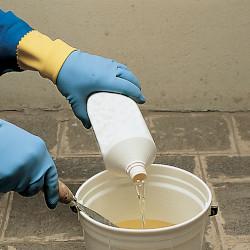
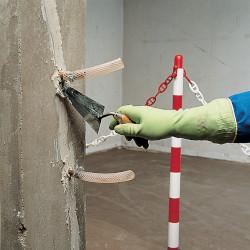
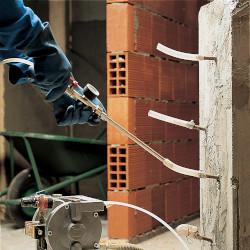
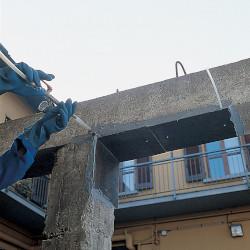
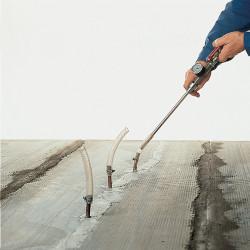
Tools used for preparing and injecting Epojet must be cleaned immediately after use and before it hardens with solvents (ethyl alcohol, toluene, etc )
CONSUMPTION
Sealing cracks:
1 1 kg/l of cavity to be �lled
· Bonding concrete to steel:
1 1 kg/m² per mm of thickness
PACKAGING
4 kg kits
(component A : 3 2 kg - component B : 0 8 kg); 2 5 kg kits (component A : 2 kg - component B : 0.5 kg).
STORAGE
24 months if stored in its original packaging Keep the product stored in an area with a temperature not below +5°C
SAFETY INSTRUCTIONS FOR PREPARATION AND APPLICATION
Epojet component A is irritant for the skin and the eyes, Epojet component B is corrosive and can cause burns
Furthermore, it is harmful when inhaled or swallowed. Both component A and component B can cause sensitisation if they come in contact with the skin of those predisposed The product contains low molecular weight epoxy resins that may cause sensitisation if cross-contamination occurs with other epoxy compounds
During use, wear protective gloves and goggles and take the usual precautions for handling chemicals. In case of contact with the eyes or the skin, wash immediately with plenty of water and seek medical attention Use a suitable device for the protection of the respiratory tract
When the material reacts it generates a high amount of heat We recommend applying the product as soon as possible after mixing components A and B and to never leave the container unattended until it is completely empty
Epojet component A and component B are dangerous for aquatic life, do not dispose of them in the environment
For further and complete information about the safe use of our product please refer to the latest version of our Material
Safety Data Sheet
PRODUCT ONLY FOR PROFESSIONAL USE
TECHNICAL DATA (typical values)
A : component B = 4 : 1
of mix:
Setting time:
Application
h
h
Final hardening time: 7 days
FINAL PERFORMANCE
Although the technical details and recommendations contained in this product data sheet correspond to the best of our knowledge and experience, all the above information must, in every case, be taken as merely indicative and subject to con�rmation after long-term practical application; for this reason, anyone who intends to use the product must ensure
beforehand that it is suitable for the envisaged application In every case, the user alone is fully responsible for any consequences deriving from the use of the product
Please refer to the current version of the Technical Data Sheet, available from our website www mapei com
LEGAL NOTICE
The contents of this Technical Data Sheet (“TDS”) may be copied into another project-related document, but the resulting document shall not supplement or replace requirements per the TDS in force at the time of the MAPEI product installation
The most up-to-date TDS can be downloaded from our website www.mapei.com.
ANY ALTERATION TO THE WORDING OR REQUIREMENTS CONTAINED OR DERIVED FROM THIS TDS EXCLUDES THE RESPONSIBILITY OF MAPEI
367-2-2018-gb
